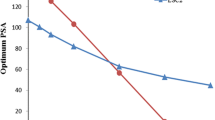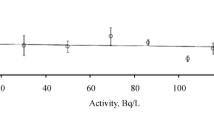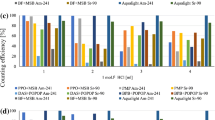Abstract
A portable liquid scintillation counting system based on the triple-to-double coincidence ratio (TDCR) method was developed at Sofia University “St. Kliment Ohridski”. The system consists of a miniature TDCR counter with cylindrical optical chamber and a specialized TDCR counting module named nanoTDCR. The nanoTDCR module is produced by the labZY company and provides several important new TDCR counting functionalities like: individual extending-type dead-time in each channel; simultaneous counting with two different extendable dead-times and two different coincidence windows and simultaneous TDCR counting and spectrum acquisition. The performance of the new system was tested in benchmark comparisons with the LNHB’s primary TDCR counting system of activity measurements of 241Am, 3H, 14C and 63Ni. Good agreement between the two systems was observed.





Similar content being viewed by others
References
Malonda G, Carles G, L’Annunziata M (2012) Handbook of radioactivity analysis, vol 3. Academic Press, Amsterdam
Broda R, Cassette P, Kossert K (2007) Radionuclide metrology using liquid scintillation counting. Metrologia 44:S36–S52
Cassette P, Capogni M, Johansson L, Kossert K, Nähle O, Sephton J, De Felice P (2013) Development of portable liquid scintillation counters for on-site primary measurement of radionuclides using the triple-to-double coincidence ratio method. In: Proceedings of the 3rd International Conference on Advancements in Nuclear Instrumentation, Measurement Methods and their Applications (ANIMMA), Marseille, 2013, doi 10.1109/ANIMMA.2013.6727876
Donatiello S, Capogni M, De Felice P, Cannatà V, D’Arienzo M, Strigari L, Tapner M (2016) Absolute measurement in situ of the 90Y activity in liquid solution by TDCR method and calibration of an ionization chamber. Phys Med 32:e104
Capogni M, De Felice P (2014) A prototype of a portable TDCR system at ENEA. Appl Radiat Isot 93:45–51
Triple-to-double coincidence ratio liquid scintillation counting system (TDCR) and MCA, http://www.labzy.com/index.html#nanoTDCR. Accessed 24 May 2017
Bouchard J, Cassette P (2000) MAC3: an electronic module for the processing of pulses delivered by a three photomultiplier liquid scintillation counting system. Appl Radiat Isot 52:669–672
Detection efficiency calculation for pure-beta radionuclides, LNHB program with short tutorial, 2012 version, TDCR07c.zip: http://www.nucleide.org/ICRM_LSCWG/icrmsoftware.htm. Accessed 24 May 2017
Acknowledgements
This work is supported by the Bulgarian National Science Fund under Contract DFNI T02/13”POLYRAD”. The authors are indebted to Mr. Nikolay Markov and Mr. Todor Todorov for the mechanical work on the TDCR counter, which was manufactured and assembled in Bulgaria.
Author information
Authors and Affiliations
Corresponding author
Electronic supplementary material
Below is the link to the electronic supplementary material.
Rights and permissions
About this article
Cite this article
Mitev, K., Cassette, P., Jordanov, V. et al. Design and performance of a miniature TDCR counting system. J Radioanal Nucl Chem 314, 583–589 (2017). https://doi.org/10.1007/s10967-017-5451-3
Received:
Published:
Issue Date:
DOI: https://doi.org/10.1007/s10967-017-5451-3




